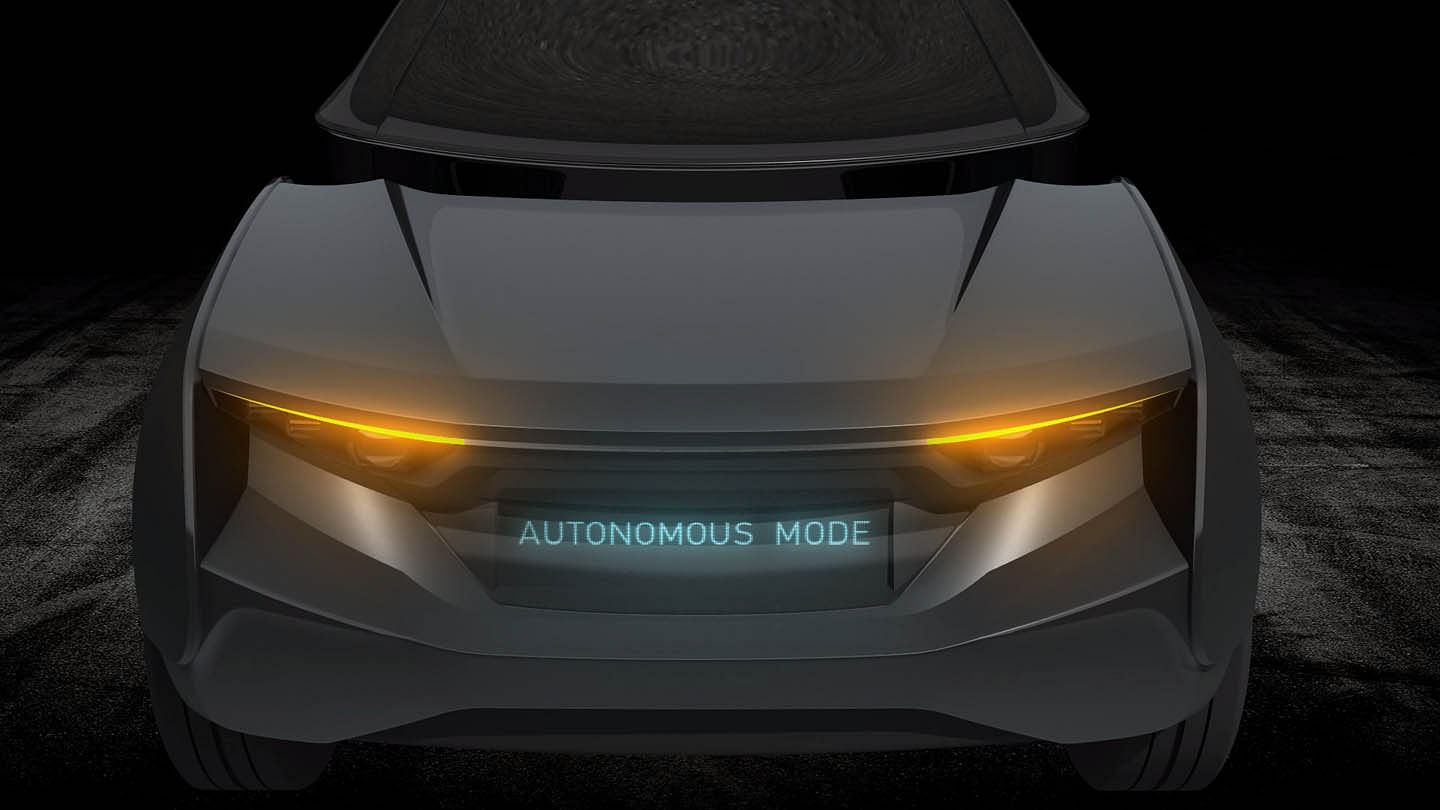Hella and Covestro reveal new vehicle lighting solution with holographic tech
The two German suppliers develop an innovative holographic lighting with 3D effects and a jointless, aerodynamic design for EVs.
Lighting and electronics specialist Hella, along with polymers major Covestro, has developed a new design for the signal lights on vehicles using holography technology.
Since 2012, both companies have been pooling their expertise in the fields of plastics technology and design and lighting technology to insert the signal lighting specifically as a styling element. The joint development is an innovative design for the front and rear lighting of electric cars. The result is a holographic lighting with 3D effects and a jointless and aerodynamic design. The innovation is presented on a show car at the Covestro booth at K Fair, the leading fair for the plastics and rubber industry (Hall 6, Stand A75).
The rear of the vehicle is comprised of a lamp with three parts, each equipped with holographic technology. Designers at Hella developed the holograms before Covestro incorporated them into a transparent holographic film, which retains the design and is laminated onto a 3mm glass plate. For series applications in the future, plastic will be used instead of glass.

"Holographic films are perfectly suited for integrating different lighting functions into the body in a space-saving and unobtrusive way. The installation depth can be reduced and automotive manufacturers have the possibility to install more compact lamps," explains Dr. Michael Kleinkes, Head of Development Lighting Technology at Hella. The holographic film is illuminated from behind using LED light sources and reflectors. This results in a 3D effect – as if the elements are floating freely in space. In both of the outer elements of the rear lamp, a hologram was inserted with numerous illuminating areas (flakes). Integrated into the tailgate is the middle lamp, on which the Hella and Covestro company logos appear to be floating.
What stands out at the rear of the concept car is the design of the stop lamp. Instead of a separate centre high-mounted stop lamp, Hella has created a joint signature for the stop lamp and centre high-mounted stop lamp. "As the statutory regulations have been fulfilled, it would be possible to implement this approach in series applications immediately," says Dr. Michael Kleinkes.
The tail-light is also visually combined with the direction indicator. For this, a diffuser film with diffractive optics developed by Covestro is used. This forms and distributes light beams with minimal loss of light, thus ensuring uniform light distribution. The LEDs located behind this in the two outer parts are designed two-colored so that both the direction indicator and the tail-light functions can be generated. The functions are also animated, meaning that the effect of a sequential turn signal can be realised, for example.

Seamless uniform front
Hella and Covestro have not only re-designed the rear of the vehicle, but also the front. The companies have created a seamless, uniform surface. The signal functions have been realised with a three-part EdgeLight light guide. This spans the entire front of the vehicle as a continuous lighting strip. The two outer parts of the light guide create the direction indicator lights as well as daytime running lights, which can be dimmed to position lighting. The middle light guide is responsible for the continuous daytime running light and position light signature. These functions can also be animated. The area in front of the vehicle is illuminated using four so-called ComLED modules. The two main lighting functions of low beam and high beam lighting are executed by the matrix HD84 module developed by Hella.
LED displays are integrated in both the front and rear of the vehicle in order to enable additional animations, such as the welcome light function. In the future, this could not only be possible when stationary but also during driving, in combination with other light functions, for example. When braking, for example, it would be possible to illuminate not only the stop lamp, but also show the additional indicator ‘STOP’.
Also read: Covestro's innovation-laden concept car at K2016 plastics expo
RELATED ARTICLES
Volkswagen Group sells 465,500 BEVs worldwide in first-half 2025, up 47%
With strong growth in Europe (+89%) and the USA (+24%), despite a sales decline in China (-34%), the VW Group’s global B...
Skoda begins sale of made-in-India CKD Kushaq in Vietnam
Before production started, pre-series Kushaq vehicles covered over 330,000 kilometres on a variety of Vietnamese roads a...
Six Japanese companies join forces to expand use of recycled materials in new vehicles
Denso, Toray Industries, Nomura Research Institute, Honda Motor, Matec Inc and Rever Corporation have set up the BlueReb...





 By Autocar Professional Bureau
By Autocar Professional Bureau
 19 Oct 2016
19 Oct 2016
 12860 Views
12860 Views









